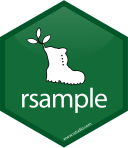glimpse(taxi_raw)
#> Rows: 10,000
#> Columns: 24
#> $ trip_id <chr> "3ac8d4412642a35e9b9a493285814d7983d5a159",…
#> $ taxi_id <chr> "391317d70c5d06deec744062c4595dc1958b200fda…
#> $ trip_start_timestamp <dttm> 2023-06-10 18:45:00, 2023-05-21 21:30:00, …
#> $ trip_end_timestamp <dttm> 2023-06-10 19:30:00, 2023-05-21 21:45:00, …
#> $ trip_seconds <dbl> 3258, 839, 476, 2220, 1588, 2270, 1575, 267…
#> $ trip_miles <dbl> 17.02, 2.16, 1.05, 17.40, 17.62, 16.36, 18.…
#> $ pickup_census_tract <dbl> 17031980000, 17031839100, 17031320100, 1703…
#> $ dropoff_census_tract <dbl> 17031081403, 17031081300, 17031081403, 1703…
#> $ pickup_community_area <dbl> 76, 32, 32, 76, 32, 76, 76, 32, 32, 33, 8, …
#> $ dropoff_community_area <dbl> 8, 8, 8, 32, 76, 8, 32, 76, 28, 32, 7, 33, …
#> $ fare <dbl> 44.50, 10.00, 6.75, 45.00, 44.25, 41.25, 44…
#> $ tips <dbl> 12.25, 4.00, 2.00, 9.90, 8.00, 9.15, 12.31,…
#> $ tolls <dbl> 0, 0, 0, 0, 0, 0, 0, 0, 0, 0, 0, 0, 0, 0, 0…
#> $ extras <dbl> 4.0, 1.0, 0.0, 4.0, 2.0, 4.0, 4.0, 0.0, 0.0…
#> $ trip_total <dbl> 61.25, 15.50, 9.25, 58.90, 54.75, 54.90, 61…
#> $ payment_type <chr> "Credit Card", "Credit Card", "Credit Card"…
#> $ company <chr> "Taxicab Insurance Agency Llc", "Chicago In…
#> $ pickup_centroid_latitude <dbl> 41.97907, 41.88099, 41.88499, 41.97907, 41.…
#> $ pickup_centroid_longitude <dbl> -87.90304, -87.63275, -87.62099, -87.90304,…
#> $ pickup_centroid_location <chr> "POINT (-87.9030396611 41.9790708201)", "PO…
#> $ dropoff_centroid_latitude <dbl> 41.89092, 41.89833, 41.89092, 41.87102, 41.…
#> $ dropoff_centroid_longitude <dbl> -87.61887, -87.62076, -87.61887, -87.63141,…
#> $ dropoff_centroid_location <chr> "POINT (-87.6188683546 41.8909220259)", "PO…
#> $ tip <fct> yes, yes, yes, yes, yes, yes, yes, yes, yes…Extras - Time-based data splitting
Introduction to tidymodels
The raw taxi data set
We prepared the data set specifically for this introductory workshop.
It looked similar to this:
Time nature of the data
We assumed only the month, day of the week, and hour mattered and treated each observation as independent.
If the data have a strong time component, all your data splitting strategies should support the model in estimating temporal trends.
Thus, don’t sample randomly because this breaks up the time component!
Splitting with time component ![]()
The more recent observations are assumed to be more similar to new data, so initial_time_split() puts them into the test set.
The function assumes that the data are already ordered.
Time series resampling
The same idea also applies to resampling: the newer observations go into the assessment set.
For example:
Fold 1: Take the first X weeks of data as the analysis set, and the next 3 weeks as the assessment set.
Fold 2: Take weeks 2 to X + 1 as the analysis set, and the next 3 weeks as the assessment set.
and so on
Rolling origin forecast resampling
Times series resampling ![]()
Use the trip_start_timestamp column to find the date data.
Times series resampling ![]()
Our units will be in weeks.
Times series resampling ![]()
Every analysis set has 8 weeks of data.
Times series resampling ![]()
Every assessment set has 3 weeks of data.
Times series resampling ![]()
Increment by 1 week
taxi_rs$splits[[1]] %>% assessment() %>% pluck("trip_start_timestamp") %>% range()
#> [1] "2023-03-02 05:15:00 UTC" "2023-03-22 22:00:00 UTC"
taxi_rs$splits[[2]] %>% assessment() %>% pluck("trip_start_timestamp") %>% range()
#> [1] "2023-03-09 07:00:00 UTC" "2023-03-29 21:15:00 UTC"
taxi_rs$splits[[3]] %>% assessment() %>% pluck("trip_start_timestamp") %>% range()
#> [1] "2023-03-16 06:30:00 UTC" "2023-04-05 23:45:00 UTC"